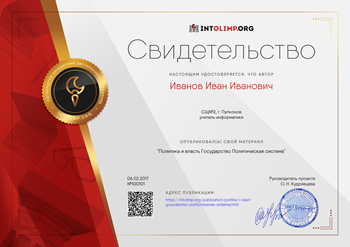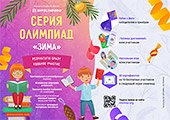Ашық сабақ OUTER WORLD – ТЫСҚАРЫ ӘЛЕМ
Aims
Grammar: passive advanced structures
Vocabulary: space exploration words
Expressions: Expressing an opinion and giving reasons and results
Communicative tasks: Speaking about holidays in space and talk about space exploration
Level Upper-Intermediate
Organization Individuals and group
Preparation Handouts
Modules Critical thinking, dialogic teaching, assessment of and for learning
Procedure
ORGANIZATION MOMENT “Think the lesson is going to be…”
Step 1 Find someone who
Each student receives a handout. Everyone walks around the room and finds out who
… enjoys adventure travel
… likes space tourism
… is interested in spending his/her holiday in the Moon
… likes science fiction stories
… saw the film War of the Worlds
… knows the meaning of the word NASA
… can elicit the meaning of UFO
… wants to explore the stars and planets
… doesn’t know that the Sun is a star
… enjoys watching sci-fi and fantasy films
…knows the name of Red Planet
… knows the planet that has rings
Step 2. Making a circle in the middle of the classroom students introduce with their find out sentences: Eg.
St.1 Nurjan told me that the name of the Red Planet was Mars.
St.2 Dias says the film War of the Worlds is about the Earth that had been invaded by Martians with ray guns and poison gas.
St.3 Zhulduz knows the meaning of the word UFO. It means Unidentified Flying Object.
Step 3. The teacher asks them what they think the lesson is going to be about. Each student can talk their opinion.
KEY VOCABULARY “The quickest”
Step1 Each group is given 3 minutes to complete the timeline of space exploration with the words in the box.
| Space astronaut astronomer atmosphere capsule cosmos crew gravity launch (v) man-made mission mission control orbit (n) orbit (v) planet re-enter satellite spacecraft space shuttle space station touchdown |
1st group Timeline of space exploration
1957 The Soviet Union sent a 1______called Sputnik into space. It was the first2__________ object ever to leave the Earth’s 3__________
1959 Two monkeys became the first animals to survive space travel. They experienced zero 4__________for nine minutes before their space 5__________returned to Earth.
1961 The first man in Space, Russian 6 Yuri Gagarin,7 _______the Earth for 108 minutes before 8 the Earth’s atmosphere and landing at a secret location.
1968 Three Americans orbited the Moon in their9__________Apollo 8 for 20 hours before making a safe 10 in the sea.
2nd group Timeline of space exploration
1969 American Neil Armstrong became the first man to walk on the Moon.
1972 Apollo 1 successfully completed the last ever11_____________to the Moon.
1981 Columbia, the first12 ___________, made its first flight. Unlike previous spacecraft, it was designed to be re-used.
1986 The Soviet Union 13 __________ the Mir14____________, which remained in 15 around the Earth until November 2000.
3rd group Timeline of space exploration
1990 The Hubble telescope, named after the 16___________Edwin Hubble, was sent into orbit and began sending back amazing photos of the 17____________
1997 A robot called Sojourner spent nearly three weeks moving around the surface of the 18____________Mars and sent back 550 photos to scientists at19 ___________on Earth.
2001 A billionaire businessman called Denis Tito paid $20 million to become the first space tourist. He joined the 20_________of the International Space Station for 8 days.
2018 The USA plans to spend $100 billion on a mission to put humans back on the Moon by 2018.
Step 2. Speaking. Groups are given 2min. to write two questions about the information in the timeline using question words: Who? What? Where? When? How long/many… and take turns to ask a member of the other team a question.
Group 1.
What animals were the first to survive space travel?
Who orbited the Moon in their spacecraft Apollo 8 for 20 hours?
Group 2.
Who was the first man to walk on the Moon?
What spacecraft was to be re-used designed?
Group 3
How long did a robot called Sojourner spend moving around the surface of the Mars?
How much money did Denis Tito pay to become the first space tourist on the Moon?
GRAMMAR DATABASE
Step 1. Students are given passive advanced structures and do tasks in 5 minites. Passive with know, believe, think, etc.
Verbs tike know, believe and think are often used in passive constructions, especially in formal language. We can use an impersonal construction with it + passive: it + passive (present or past) + that...
It was believed by many people in the Middle Ages that the Sun went round the Earth.
It is now known that the Earth goes round the Sun.
Alternatively we use a passive construction with an infinitive: subject + passive (present or past) + to do / to have done something
The Sun was believed by many people to go round the Earth.
If the sentence refers to a present belief about a past event, we use the present simple passive followed by a perfect infinitive (to have done something).
The prisoner is believed to have escaped through an open window.
Step 2. Rewrite the sentences using passive structures using know, believe, think, etc.
Start with the words given.
They say that no living thing can survive without the Sun
a It is said .../ It is believed …
They think that the Saturn made up of billions of rocks, dust, and other things
a It is thought…
They believed that the Earth was flat.
a It... b The Earth ...
They now know that Mercury gets super hot and cold and spins very slow
a It... b Mercury
They reported that Mars, the red planet got deserts, ice and two moons
a It... b It was reported …
They expect that a huge asteroid will come close to the Earth.
a It... b A huge asteroid
PRESENTATION “In my opinion or I think…”
Step 1 Students are given the photos to discuss in pairs:
What is happening in each photo? What aspects of space exploration do they show? What can be learned from space exploration?

Possible answers
The first picture shows that a US astronaut putting a flag on the Moon. I think the US flag is seen all about national pride.
In my opinion in the second photo astronauts doing an experiment in space.
WARMING UP LYRICS. OUTER SPACE: "WE ARE THE PLANETS"
Step 1. Students are given the sheet of paper song and sing together with Storybots.
STORYBOT 1
We can see the whole Solar System from here.
STORYBOT 2
I think we can hear it from here too.
ALL PLANETS (CHORUS)
We are the planets of the Solar System
Different sizes for every one
The music never ends
We are such good friends
And we all orbit the sun
SUN
Here comes the Sun rapping first on this track, from the beginning
I'm the center of the solar system, planets be spinning
Around me, so hot, I'm roasting, ya see?
Now I pass the mic to the planet closest to me
MERCURY
Mercury! The smallest planet, small as Earth's moon (MOON: "Yo!")
I get super hot and cold and I spin very slow
VENUS
I'm Venus! I've got mountains and volcanoes that spray
I'm the same size as Earth but spin the opposite way
EARTH
Yeah, I'm Earth, I'm the home to every boy and girl
(Sung by Stars) Such a beautiful, beautiful world
MARS
I'm Mars, the red planet, I've got deserts and ice
And I've got two moons - nice - that's like one moon, twice!
JUPITER
I'm Jupiter! the biggest planet, I'm humungous, gargantuan
I spin the fastest, rap the fastest, plus I'm handsome, BAM SON!
SATURN
Oh please, I'm Saturn, check out my beautiful rings
Made up of billions of rocks, dust, and other things
URANUS
I'm Uranus, I say that with pride, okay, I lied
I'm embarrassed 'cause I'm the only planet lying on its side
(Uranus lies on its side and the mic flies to Neptune)
NEPTUNE
I'm Neptune, I'm cold, dark, windy and mysterious
I'm very stormy, so bring an umbrella - I'm serious
ALL PLANETS (CHORUS)
We're the planets in the Solar System
Different sizes for every one
The music never ends
We are such good friends
And we all orbit the sun
STORYBOT 1
Well, we are done exploring the Solar System.
STORYBOT 2
I am thirsty. Let's explore the rest of the Milky Way Galaxy.
SPEAKING “A TRIP TO THE MOON”
Step 1 Students imagine that they are going on a trip to the Moon for two weeks. Students are given pictures of some things that they can take with them to the Moon: a camera, a computer, a scaphander, a telescope, a diary, a gun, a paintball, a pen, an umbrella, a glass, a mobile phone, a match, a car and so on.













Step 2. Students discuss which thing will be useful on the trip and which won’t and use useful phrases below:
| Expressing an opinion | Giving reasons and results |
| I (don’t) think we’ll need … | …because… |
| Maybe we should take … | … as… |
| A (an) is (isn’t) going to be very useful… | … seeing as… |
| I’m definitely taking … | The main reason is … |
| We’ll/ We won’t be able to use … | … so … |
Eg. I’m definitely taking a telescope because I will see asteroids going round the Sun.
We won’t be able to use a match as there is no air on the Moon.
CONCLUSION “SHARE YOUR IDEAS”
Step 1. The teacher asks every member of the group to share the basic idea of the theme in one sentence or what they have learnt from this lesson.
Student 1: I have learnt that the Sun is a star.
Student 2: Now I know there are eight planets in the Solar System.
Student 3: The Earth is the third planet in the world.
Student 4: I know that the Solar system has got two planets: inner planets and outer planets.
Student 5: Mercury is the smallest planet, it gets super hot and super cold and spins very slow.
Student 6: I have learnt three quarters of the Earth is covered in water.
Student 7: Neil Armstrong became the first man to walk on the Moon.
Student 8: I think nuclear weapons will be used to destroy dangerous asteroids.
Student 9: Now I know that the Hubble telescope, named after the astronomer Edwin Hubble.
Student 10: A billionaire businessman called Denis Tito paid $20 million to become the first space tourist.
Student 11: A robot called Sojourner sent back 550 Mars’ photos to scientists at mission control on Earth.
Student 12: I have learned about the invaders from outer space.





















